Iran’s Top 10 Seas and Lakes to Explore
Iran, situated in Western Asia, boasts a diverse and geographically complex landscape where water plays a central role.
Characterized by mountains, plateaus, and coastlines, the country harbors an extensive network of over 850 rivers, 560 lakes, and access to two major seas.
These intricate aquatic threads shape the land's character. Fresh water from rivers and lakes nurtures vibrant forests and sustains diverse communities. The vastness of the Caspian Sea and the Persian Gulf provide crucial resources, supporting bustling ports and teeming ecosystems.
In this blog post, we explore the seas and lakes of Iran, highlighting the country's largest, most enchanting, and unique water bodies.
Facts about the Rivers, Lakes and Seas of Iran
- There are over 500 lakes in Iran, each contributing to the country's rich aquatic landscapes and ecological diversity.
- The best lakes in Iran, renowned for their beauty and tourist attractions, include Lake Urmia, with its mesmerizing pink hues, and Maharloo Lake, surrounded by scenic salt flats.
- The largest lakes in Iran are Lake Urmia, covering an area of approximately 5,200 square kilometers, Lake Hamun veraging around 4,000 sq km, Lake Namak, spanning about 1,800 square kilometers, and Lake Bakhtegan estimated to be around 1,600 sq km, showcasing the vastness of Iran's inland waters.
- With a glance at the Seas of Iran map, one realizes that the country is strategically positioned with access to the Caspian Sea in the north and the Persian Gulf and Gulf of Oman in the south, highlighting Iran's significant maritime influence and economic connectivity.
- There are more than 200 rivers in Iran, contributing to the country's natural wonders. Among the most important ones are the Karun River, vital for irrigation and hydroelectric power, and the Zayandeh Rud, enhancing the beauty of Isfahan with its historic bridges and gardens.
- The best lakes in Iran for fishing enthusiasts include Choghakhor Lake, famous for its abundant trout and carp populations, and Anzali Lagoon, known for a variety of fish species such as pike, bream, and whitefish. Additionally, Shurabil Lake is popular for its diverse aquatic life, offering opportunities for anglers to enjoy a rich fishing experience in Iran.
List of the Top 10 Seas and Lakes in Iran
- Caspian Sea
- Persian Gulf
- Oman Sea
- Lake Urmia
- Parishan Lake
- Gohar Lake
- Maharloo Lake
- Churat Lake
- Ovan Lake
- Anzali Talab
1. The Caspian Sea

While often referred to as Mazandaran Lake in Iran, the Caspian Sea stands as the world's largest lake, gracing the shores of five nations: Iran, Kazakhstan, Russia, Azerbaijan, and Turkmenistan. More than just a geographical marvel, the Caspian Sea plays a multifaceted role in the region's economy, ecology, and tourism.
The Caspian Sea, also known as Gilan Sea, Tabaristan, is renowned for its exquisite caviar, harvested from the prized sturgeon population. Its waters teem with over 4,000 aquatic species, providing a livelihood for countless fishermen year-round. Furthermore, the seabed holds vast reserves of oil and gas, making the Caspian Sea a significant energy resource, particularly for Azerbaijan.
With its pristine beaches, breathtaking landscapes, and bordering high mountains, the Caspian Sea draws millions of tourists to Iran's northern provinces, especially Mazandaran and Gilan. Swimming, water sports, and mountaineering are popular activities here, offering a delightful escape from the arid climate of much of Iran.
The Caspian Sea boasts a rich history, reflected in its diverse names. Throughout the ages, it has been known as Gilan Sea, Tabaristan, and Caspian, each name echoing its cultural significance.
| Discover: Iran's Wildlife | A Nature Lover's Guide + Pics
2. The Persian Gulf
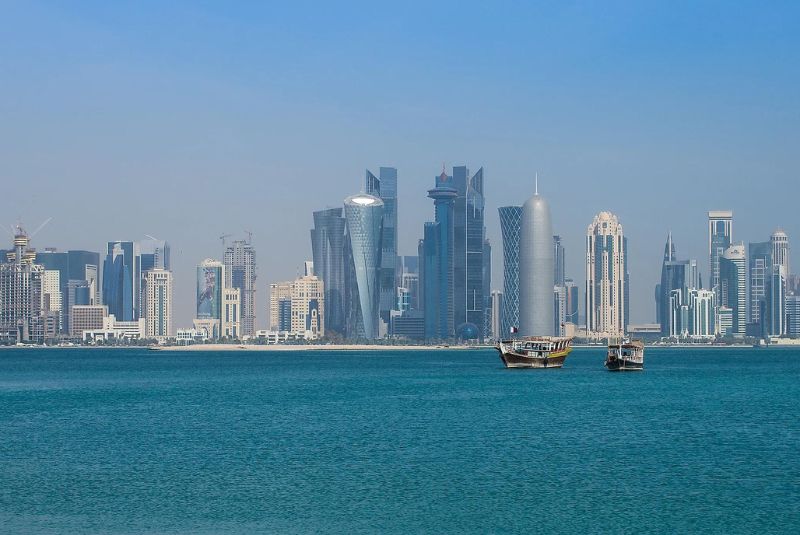
The Persian Gulf, a large extension of the Indian Ocean, is located in Western Asia. Bordered by Iran to the northeast and the Arabian Peninsula to the southwest, it stretches for 990 kilometers with a width ranging from 338 kilometers to a mere 56 kilometers at the Strait of Hormuz, its narrowest point.
The historical name "Persian Gulf" stems from the Achaemenid Empire, which flourished in the region around 550 BC. Today, several islands dot the Gulf, with Hendurabi, Kish, Sirri, Abu Mussa, the Greater and Lesser Tunb, Qeshm, Hengam, Larak, Hormuz, and Lavan being under Iranian administration.
Along the Iranian coast of the Persian Gulf, several notable ports facilitate trade and maritime activities. These include Abadan, Khorramshahr, Bandar Imam Khomeini, Mahshahr, Deilam, Gonaveh, Rig, Bushehr, Bandar Lengeh, and Bandar Abbas.
| Related: Persian Gulf Islands - A Traveler's Guide to Iran's Coastal
3. Oman Sea

Spanning the southern coast of Iran, the Oman Sea forms a connection between the Persian Gulf and the Indian Ocean. This body of water plays a diverse role in shaping Iran's landscape, marine life, and economic activity.
The Iranian coastline along the Oman Sea presents a captivating tapestry of natural wonders and historical sites. Lush coastal plains transition to dramatic cliffs and sandy beaches, offering habitats for vibrant coral reefs teeming with diverse fish populations. Cities like Chabahar offer insights into the region's maritime history and cultural heritage.
The Oman Sea underpins a vital fishing industry, providing sustenance for local communities and contributing significantly to the national economy. Its waters nurture a variety of fish species, from tuna and sardines to shrimp and lobsters, attracting both commercial and artisanal fishing activities. Additionally, the Oman Sea serves as a critical shipping route, facilitating trade between Iran and international partners, thus playing a key role in the country's economic development.
Vibrant coral reefs teeming with diverse marine life offer exceptional opportunities for underwater exploration. Kite surfing, windsurfing, and kayaking are popular options in areas with suitable wind and wave conditions.
Bird watching opportunities exist, while dolphins and even whales might be spotted offshore.
| Suggestion: Why Explore Iran's Ecotourism Wonders
4. Lake Urmia
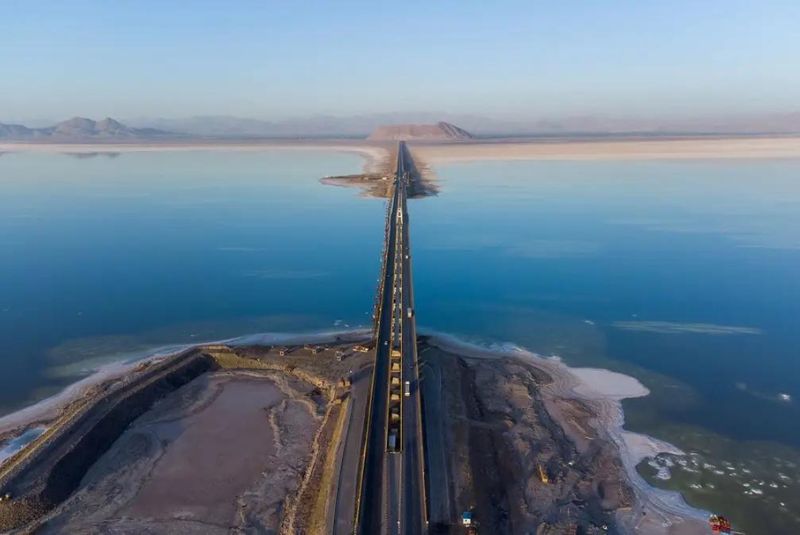
Nestled in the northwest region of Iran between West and East Azerbaijan, Lake Urmia is one the most famouse lakes in Iran, a captivating natural wonder that draws visitors from around the globe. Positioned just 20 kilometers east of Urmia city, it holds the distinction of being one of the most significant attractions in West Azerbaijan. The lake's charm lies not only in its breathtaking scenery but also in its ecological richness, housing a diverse array of plants and animals.
Fed by an intricate network of 60 rivers, Lake Urmia possesses saline waters. The combination of winter rains, springs at the lake's base, and the contribution of various rivers plays a crucial role in maintaining its water levels. Interestingly, the lake undergoes a mesmerizing transformation at times, turning hues of red and orange due to the activity of microscopic organisms. This natural phenomenon has evolved into a unique attraction, captivating numerous tourists annually.
Lake Urmia's ecological significance earned it recognition as a protected area in 1967 and later, in 1976, UNESCO designated it as one of the biosphere reserves and a national park. The lake boasts over 100 islands, some serving as habitats for migratory birds, ducks, and geese, while others remain secluded, hosting a pristine and diverse ecosystem.
Regrettably, Lake Urmia's historical status as the largest lake in the Middle East has been marred by recent environmental challenges. Neglect has led to a substantial portion of the lake drying up, causing detrimental consequences for the surrounding communities. Despite facing adversity, the lake retains its allure and enchantment.
The decline in Lake Urmia's size has been exacerbated by factors such as irregular constructions, heightened water demand from farmers, and increased evaporation. By 2014, approximately 88% of the lake's area had diminished. Despite these challenges, the lake's predominant blue color, attributed to its saltwater composition, undergoes occasional transformations to red due to elevated levels of algae, bacteria, and salt concentration during hot seasons and declining water levels.
Those who venture to Lake Urmia are treated to a spectacular sight – stunning sunsets casting hues across the water, healing mud renowned for its therapeutic properties, and a diverse range of wildlife. The lake's mud, celebrated for its benefits in treating skin, respiratory, and rheumatic conditions, attracts numerous tourists during the spring season.
| Read more: Top 10 Forests and Jungles of Iran
5. Parishan Lake
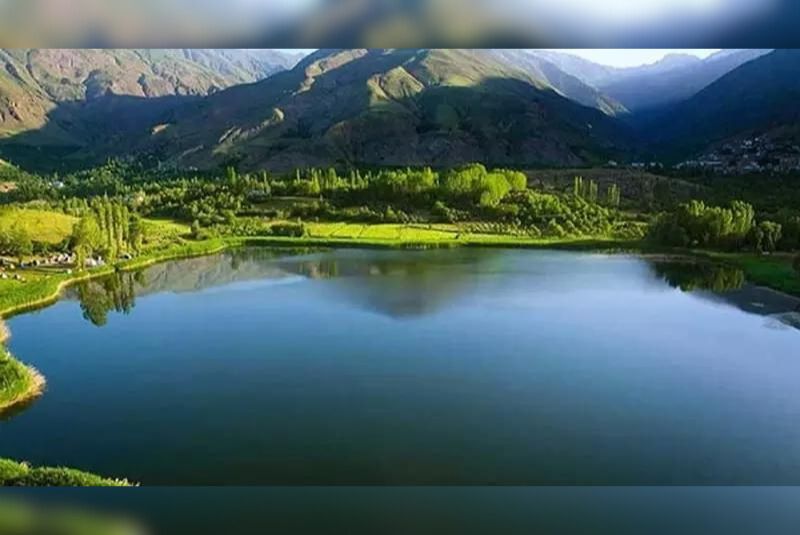
Also known locally as “Pirshon”, Parshan Lake lies 15 kilometers east of Kazerun city. This freshwater lake encompasses a basin of about 260 square kilometers and collects surface water primarily from atmospheric precipitation. Additionally, numerous springs, both on the Arjan and Famur plains and within the lakebed itself, contribute to its water supply.
Throughout history, Parshan Lake has been known by various names, including Mor, Shor, and Kazeron, reflecting its long-standing presence in the region.
Mountains surround the lake, creating a scenic backdrop. The distance between the lake and the mountains varies, reaching 4-5 kilometers on the northern side and as close as 500 meters on the southern side. The average water depth is 6 meters, although it can fluctuate depending on seasonal variations.
Lush vegetation borders the lake, creating a tranquil environment. The lake itself provides habitat for various fish species, both native and introduced for breeding purposes. During migration seasons, it attracts diverse aquatic birds, including Dorna, pelicans, flamingos, geese, and ducks.
Spring and autumn offer particularly captivating views of the lake. Meadows bloom with wildflowers, and the tranquil waters reflect the changing colors of the sky. Annual rainfall plays a crucial role in maintaining the lake's water levels, with the peak typically occurring in April.
| Suggestion: Iran's Top 14 National Parks Every Tourist Should Visit
6. Lorestan Gohar Lake
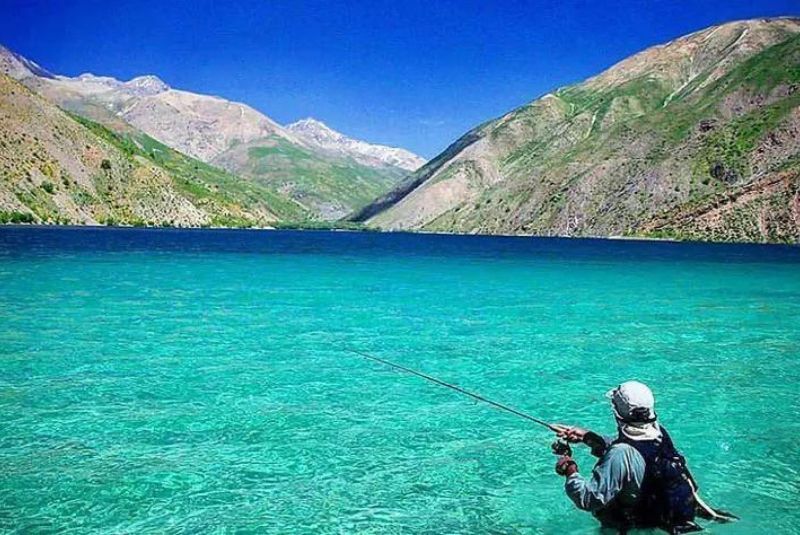
Gohar Lake, situated within the Oshtorankouh protected area 35 kilometers from Dorud city, Lorestan, constitutes two distinct sections known as Upper and Lower Gohar, separated by approximately 100 meters. Its depth reportedly exceeds 28 meters, with crystal-clear waters offering visibility of the lakebed in certain areas.
Gohar Lake serves as a crucial habitat for various fish species, including salmon, making it a popular destination for regulated fishing activities. The surrounding forests boast diverse flora, encompassing oak trees, willows, almonds, wild pistachios, and colorful wildflowers like anemones and tulips.
The lake allows for diverse recreational activities, including boating for scenic exploration, challenging mountain climbing opportunities for enthusiasts, and photography of the picturesque landscapes. Camping near the lake, particularly during spring when weather conditions are most favorable, presents a popular activity for outdoor enthusiasts.
Accessing the lake is relatively straightforward, requiring a drive to Dorud followed by a 40-minute walk along a designated path. Visitors should exercise responsible tourism practices to minimize environmental impact, bringing necessary supplies like first-aid kits, maps, insect repellent, flashlights, and sufficient food. Notably, swimming within the lake is prohibited due to its depth.
The most favorable weather conditions for visiting Gohar Lake occur during Ardibehesht (April-May). It is important to note that not all tourists are aware of this natural beauty, leading to a relatively quieter experience compared to more frequented destinations like the Caspian Sea.
7. Maharloo Lake
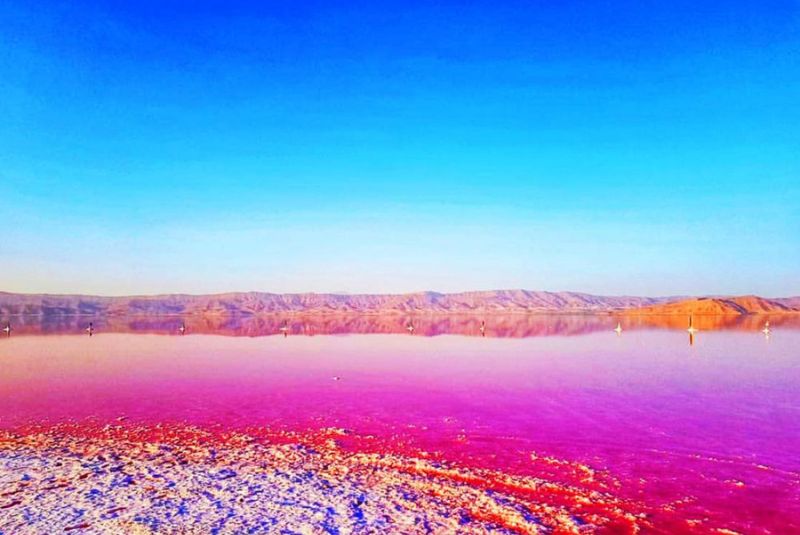
Located 27 kilometers southeast of Shiraz, Maharlu Lake, also known as the Pink Lake, stands as a unique natural wonder. This seasonal salt lake rests approximately 1500 meters above sea level, encompassing an area of around 25,000 hectares.
During spring, autumn, and winter, the lake reflects its natural color. However, it is most renowned for its captivating pink hue, typically observed during the summer months. This phenomenon arises from a combination of high salinity and the presence of a specific type of algae.
Maharlu Lake provides a vital habitat for diverse bird species, including ducks, storks, flamingos, and pelicans. Additionally, reptiles such as turtles, lizards, and snakes make this ecosystem their home.
The lake's water depth fluctuates significantly throughout the year. During the summer, it typically dries up almost entirely, only to refill with increased rainfall in autumn and winter. The primary water sources are atmospheric precipitation and dry rivers in the vicinity.
Due to high salt content and the presence of harmful pollutants, the lake's water is not suitable for drinking.
The lake derives its name from the nearby village of Maharlu, while locals also refer to it as the Pink Lake. Historically, it was known as Jenkal or the salt lake.
lthough the winter and spring months offer higher water levels, tourists visit the lake throughout the year to witness its unique features. Situated approximately 60 kilometers from the Shiraz-Fasa road, the lake is accessible by car, requiring a scenic drive from Shiraz.
8. Churat Lake

Nestled amidst the lush forests near Churat village, approximately 71 kilometers from Sari, lies the picturesque Churat Lake. Originally known as Mianshe Lake, it acquired its current name due to its proximity to the village. A fascinating geological event, an earthquake, is believed to have blocked a spring's water path, giving rise to this serene lake.
Spring and summer witness lower water levels, revealing submerged trees that create a unique and captivating sight. This scenic beauty attracts nature enthusiasts who find solace in camping by the lake's tranquil waters. While swimming is prohibited, other activities like boating offer opportunities for exploration and enjoyment.
The surrounding forest adds to the lake's allure, providing a cool refuge under its vibrant canopy. This haven of diverse trees allows visitors to immerse themselves in nature's serenity.
Beyond the lake, captivating experiences await. The quaint village of Churat, nestled amidst the forest, offers a chance to connect with local life through guesthouses. Further exploration leads to the Badab Soort Springs, the rare stairway springs in Iran, boasting unique colors and captivating views. Suleiman Tange Dam and Alendan village, located in the Salar valley, provide stunning backdrops for photographers.
Spring and summer, with their pleasant temperatures and vibrant landscapes, are considered the optimal time to visit Churat Lake. Accessibility is enhanced by the nearby village, offering options for accommodation and facilitating a seamless transition into this natural beauty.
| Read more: The Highest Mountains in Iran - Hike & Explore
9. Ovan Lake
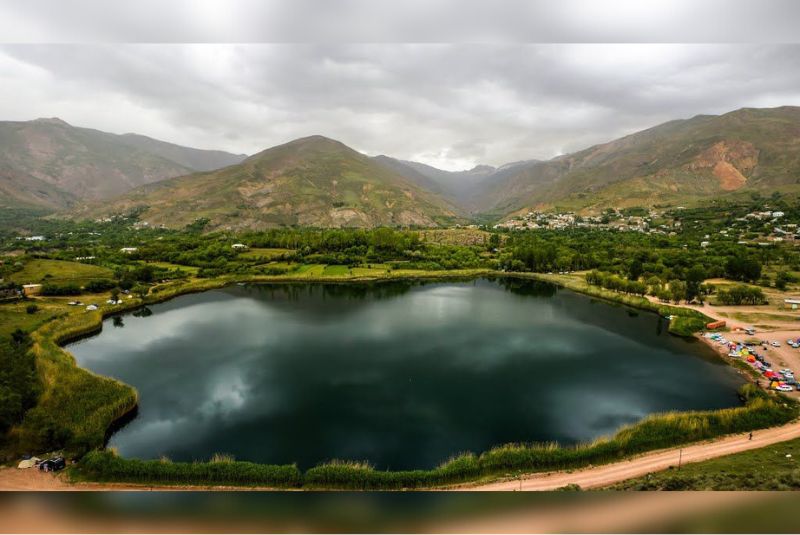
Situated near Zarabad village along the Qazvin-Almut road, Ovan Lake offers a tranquil escape amidst the scenic Alamut Mountains. Its elevation of 1815 meters above sea level ensures pleasant summer and spring weather, while autumn and winter bring colder temperatures and even freeze the lake's surface.
The journey to the lake itself presents a spectacle, with vibrant cherry blossoms lining the Alamut road in spring. Upon arrival, visitors are greeted by lush greenery and diverse plant life, including willows, plantains, and cherry trees. Additionally, convenient facilities and resorts cater to families and tourists seeking various activities.
The name "Ovan" translates to "a tub full of water," reflecting the lake's abundance. Located near the historic Alamut Castle, it serves as a crucial source of drinking water for surrounding villages. The lake's clarity stems from a combination of rainwater, underground springs, and melted mountain
The diverse vegetation surrounding Ovan Lake creates a picturesque ambiance. Foxes, wolves, jackals, eagles, owls, and woodpeckers are some of the animals that call this ecosystem home. Additionally, the presence of various fish species attracts fishing enthusiasts.
Boating, mountain climbing, fishing, bird watching, and photography are popular activities enjoyed by visitors. The tranquil setting also attracts nature enthusiasts seeking camping and overnight stays.
Spring is considered the optimal time to visit Ovan Lake, when its beauty reaches its peak. Combining a visit to the lake with exploring the majestic Alamut Fortress further enriches the experience.
| Discover: Top 20 Most Beautiful Waterfalls in Iran
10. Anzali Talab (lagoon)

Nestled within Gilan province, northern Iran, lies Anzali Talab, also known as Anzali Lagoon and Hozcheh Anzali. This vast freshwater expanse, boasting a size of up to 120 square kilometers during winter and spring, holds the distinction of being Iran's largest freshwater lake. Located about 40 kilometers from the provincial center, Anzali Lagoon draws visitors with its unique ecosystem and mesmerizing beauty.
One of the main attractions is the abundance of Caspian lotus flowers, creating a romantic and picturesque landscape. More importantly, the lagoon serves as a haven for diverse birdlife, hosting around 100 species. Birdwatchers flock to this natural wonder to witness colorful flocks and majestic soaring birds, enjoying boat rides for an immersive experience.
The life within the lagoon extends beyond its avian residents. Fifty species of fish inhabit its waters, while hundreds of plant varieties contribute to the diverse ecosystem. Eleven main rivers and 30 tributaries feed the lagoon, maintaining its delicate balance.
Whether seeking a serene escape amidst nature, a thrilling birdwatching adventure, or simply a glimpse into a unique freshwater ecosystem, Anzali Lagoon offers an unforgettable experience for nature enthusiasts and travelers alike.
Botom Line
Now that you know the top 10 seas and lakes in Iran, go ahead and plan your trip! Beyond the comprehensive list of splendid lakes and seas, there exists a plethora of additional natural wonders, each eager for your exploration in this captivating and enchanting country. Your adventure awaits!
Share your story!
Comment below and let us know about your Experience.
Your story inspires others!


Comment
Leave a Comment